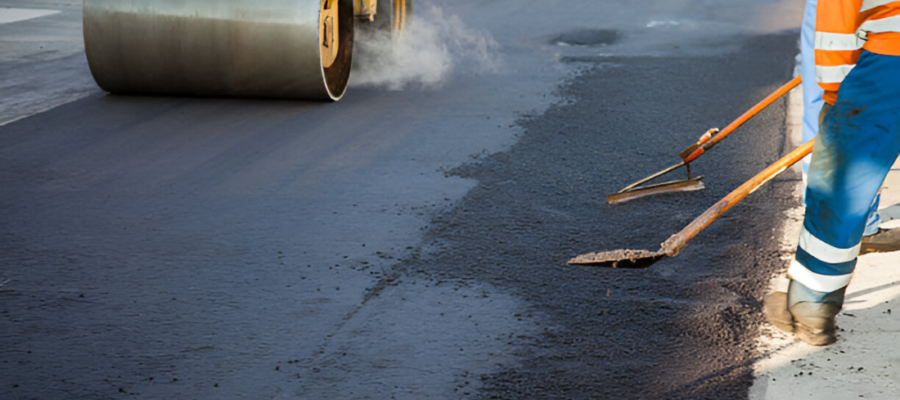
Bitumen emulsions are classed as cationic or anionic based on their ionic charge. Because aqueous bitumen emulsions are widely employed in construction as binding and film-forming materials, two types of emulsifiers are used: anionic and cationic. Cationic emulsions begin with the letter “C.” If no C is present, the emulsion is generally anionic. When creating an emulsion for compatibility with specific aggregates, the charge is critical.
The following set of specifications indicates how rapidly an emulsion sets or coalesces. The setting categories are RS (Rapid Set), MS (Medium Set), SS (Slow Set), and QS (Quick Set). Also, the bitumen emulsion adhesion is determined by the electrical charges in the bitumen emulsion particles and the surface of the rock material. The load type is effective on the intended quality.
Chemical surface-active substances that operate as emulsifiers are categorized according to the electrochemical charge achieved when they dissolve in a water solution; for example, Cationic bitumen emulsion in Maharashtra is appropriate for siliceous (negatively charged) components.
The chemical charge of anionic emulsions is negative. Negative charges are employed less frequently for materials with positive charges (such as lime).
Cationic bitumen emulsion systems in Maharashtra outperform anionic emulsions in many ways. Most road fillers contain a small number of positively charged particles that can attract the negatively charged particles of the anionic emulsion. As a result, creating a homogeneous structure and ensuring a high degree of adhesion using an anionic surfactant is more challenging.
Bitumen should be adjusted by additives when employing anionic emulsion, whereas the emulsifier itself functions as an adhesion addition in cationic bitumen emulsion. In Maharashtra, Unlike cationic emulsions, which may interact with both alkaline and acidic minerals, anionic emulsions are more limited and only operate with alkaline minerals. The quantity of emulsifier used affects the emulsion breakdown rate, which is the time it takes for the bitumen precipitating from the emulsion to revert to its original condition.
Almost all surfaces are negatively charged. The degree or intensity of this negative charge varies depending on the substance. Anionic and cationic emulsions in Maharashtra rupture in distinct ways as a result of this phenomenon. Emulsions may behave differently in different weather and application situations due to their chemistry. The most important issues are the weather, aggregate condition, and emulsion utilized.
ANIONIC EMULSION BITUMEN PERFORMANCE ON THE ROAD IN MAHARASHTRA:
An anionic emulsion application involves the application of negatively charged drops of asphalt to a negatively charged surface. All of the components resist one another. The only way for the emulsion to break is through water evaporation. As more water evaporates, the particles are forced closer and closer together until they can no longer be separated by a water film. At this point, droplets congregate into larger and larger drops, eventually forming a sheet of asphalt on the road.
CATIONIC BITUMEN EMULSION PERFORMANCE ON THE ROAD IN MAHARASHTRA:
When cationic emulsions are applied, bitumen drops are immediately attracted to the surface and begin to break. Evaporation also causes the emulsion to lose water. As a result, a cationic emulsion in Maharashtra has two breaking mechanisms at work and will break faster than an anionic emulsion.
About Us:
Bedrock Infra is a well-known cationic bitumen emulsion manufacturer in Maharashtra, offering bitumen emulsion and other bitumen-based road-building materials. Our high-quality road-building supplies, such as bitumen emulsion, are popular among road builders. As one of the most well-known cationic bitumen emulsion manufacturers in Maharashtra, we strive to provide high-quality products to our customers.




